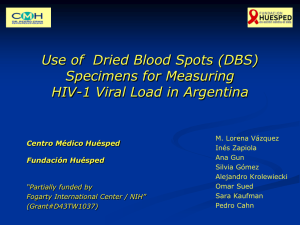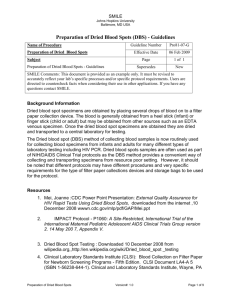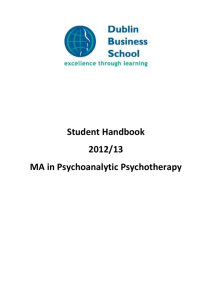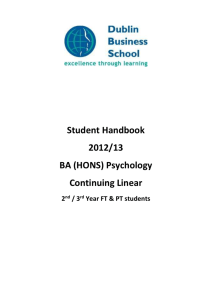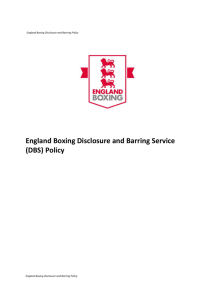Quality assurance protocol for dried blood spots
advertisement
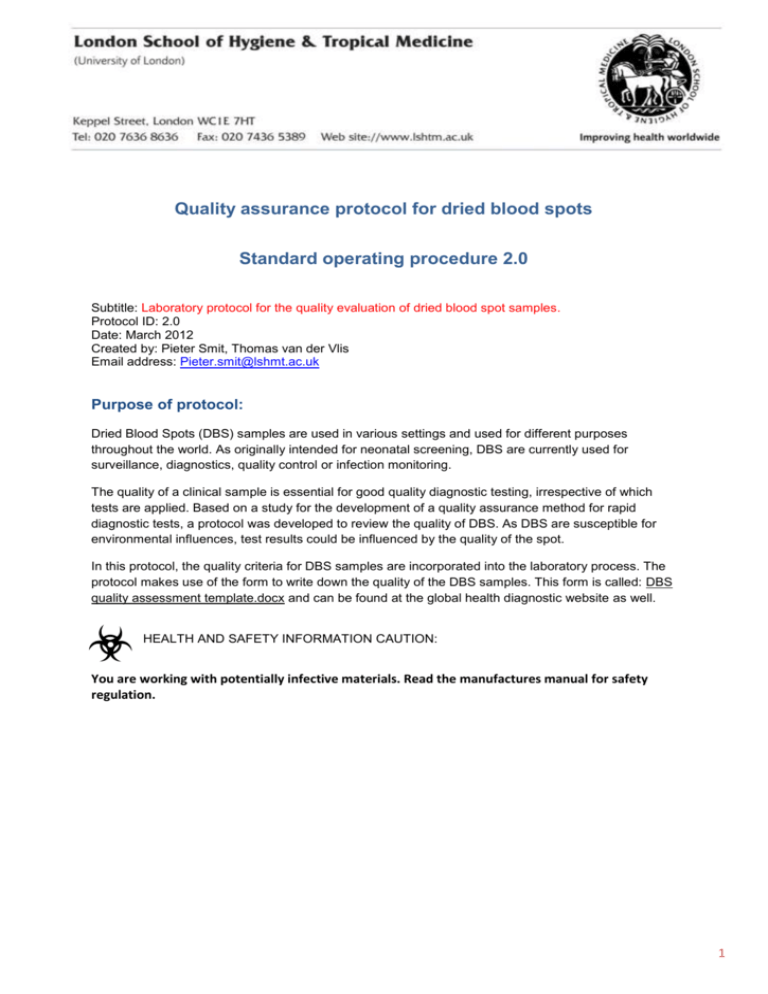
Quality assurance protocol for dried blood spots Standard operating procedure 2.0 Subtitle: Laboratory protocol for the quality evaluation of dried blood spot samples. Protocol ID: 2.0 Date: March 2012 Created by: Pieter Smit, Thomas van der Vlis Email address: Pieter.smit@lshmt.ac.uk Purpose of protocol: Dried Blood Spots (DBS) samples are used in various settings and used for different purposes throughout the world. As originally intended for neonatal screening, DBS are currently used for surveillance, diagnostics, quality control or infection monitoring. The quality of a clinical sample is essential for good quality diagnostic testing, irrespective of which tests are applied. Based on a study for the development of a quality assurance method for rapid diagnostic tests, a protocol was developed to review the quality of DBS. As DBS are susceptible for environmental influences, test results could be influenced by the quality of the spot. In this protocol, the quality criteria for DBS samples are incorporated into the laboratory process. The protocol makes use of the form to write down the quality of the DBS samples. This form is called: DBS quality assessment template.docx and can be found at the global health diagnostic website as well. HEALTH AND SAFETY INFORMATION CAUTION: You are working with potentially infective materials. Read the manufactures manual for safety regulation. 1 Procedure: Materials needed: - Desiccants (preferably color changing) - Zipper lock bags (Large & small) - Notation stickers (optional) - QA forms - Disposable gloves - substance mask (optional) Operations: One form can contain 30 entries (1 form double sided printing). - Note date and sample location on the form. Note if there were desiccants in the bags and if new ones were necessary on the form. Assess (see below for details) the individual DBS cards and fill in the form. When the form is completed, place the cards in a ‘small’ zipper-lock bag with enough new desiccants (about 1-3 desiccants). Note the “bag-number” (starting from 1) on the form and on the bag (use notation stickers). Press as much air out of the bags as possible and seal bag. Place 5 smaller zipper-lock bags in one large one and note bag-numbers. For long term storage (over 2 weeks), store at minus 4 degrees Celsius. For short term storage you may place the bags in a refrigerator (4-6 degrees Celsius) Assessment of DBS cards: Punch 1-5: Fill in code 1 through 9 for every spot. The most left spot represents spot 1. The codes representations are given below in the visual examples. As most examples are easily recognized, 2 codes are highlighted below: Code 3: Contamination (mold) can occur. Discoloration and other forms of contamination should also be marked with code 3 Code 5: Layered spots occur more commonly. Layered spots will be fairly easy to recognize because of darker blood spots above lighter ones. Spots with different colors and scratches can also be marked with code 5 (general) card impression: Assess the card itself. Is it severely damaged or very dirty on the in- and/or outside? Does it look like the sample has been very wet? If this is so, a negative assessment should be given. The ‘card impression’ does not judge individual spots, only the card itself. Humidity: Humidity can have serious influences on test results so registration is important. Assess the color of the desiccants on arrival. If they are green the cards get code 2 (if the cards are dry). If the card appears to be wet, mark with code 4. If it looks like the card has been (very) wet in the past, mark with code 5 (e.g. wrinkled and frayed) Tampered sticker: If stickers are used on the cards for registration, it can be useful to look if the stickers have been tampered with since this could lead to errors in correct registration. If stickers have been removed and re-pasted this can often be seen quite easily. Use code 2 if the sticker has been tampered with and code 3 if you are not sure. Usable?: Depending on the set requirements, the DBS cards can in theory always be used if they contain enough blood. Sometimes, however, it might be necessary to discard a DBS (e.g. high level of contamination with mold). 2 Note: Space to record extra information. Sometimes the codes on the form will not be sufficient to describe a DBS card properly. This area can be used to supplement extra information (e.g. bugs on the cards). DBS assessment results When a DBS card contains good quality spots, the test procedure can be initiated. If the card contains none acceptable spots, this sample should be recorded as “not usable”. If this is the case, it is recommendable to exclude the sample for further analysis. Recording of the results We recommend entering the quality assessment data into a database. To be able to relate the quality of the DBS samples with test outcome, the data should be linked with test results. It greatly depends on the setting which databases are available or which can be used. If no databases are suitable, Epiinfo could be a suitable alternative. Please find more details about Epi- info here: (http://wwwn.cdc.gov/epiinfo/) Legend as on QA form; - Sticker# = card/stickernumber - Pun1-5 = spot number from left to right Values 1-7 in consecutive order (see below for invalid samples): 1. good spot 2. insufficient quantity 3. diluted/discolored or contaminated 4. exhibits serum rings 5. clotted or layered 6. no spotting 7. Un-determined - CI= (general) card impression Values 1-3 in consecutive order: 1. Good 2. Bad 3. Doubtful 9. Un-determined - Hum = Humidity Values 1-5 in consecutive order: 1. dry with yellow desiccants* 2. dry with green desiccants 3. Moist 4. (very) wet 5. signs of past humidity 9. Un-determined *If no color changing desiccants were used and the card is dry use code 1. - Tamp. Stick = Tampered sticker (has the sticker been tampered with?) Values 1-3 1. No, It looks good. 2. Yes, it looks like it has been removed and re-pasted. 3. Doubtful uncertain whether sticker has been replaced. 9. Un-determined. 3 BAG-NUMBER: After entering sample data on the form, write down the given bag-number. 4


